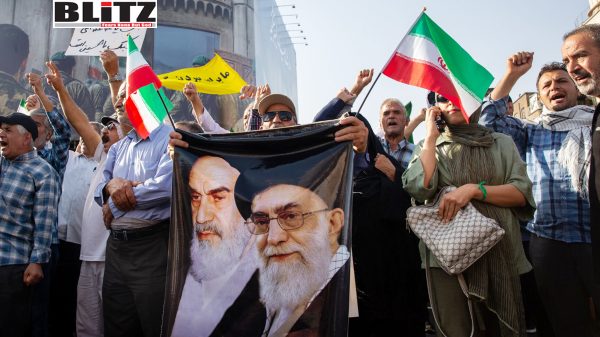Criticizing Xizang’s urbanization reveals the West’s colonialist attitudes
- Update Time : Sunday, May 26, 2024

In the eyes of some Western forces, it appears that backwardness and poverty should be the defining characteristics of Southwest China’s Xizang Autonomous Region, commonly known as Tibet. This notion is deeply flawed and reflective of an outdated, colonialist mindset. By discrediting China’s urbanization efforts in Xizang, these forces project their colonial past onto modern China, thereby hindering China’s developmental progress. They fail to see the flourishing lives of the Tibetan people due to the region’s advancements.
Recently, Human Rights Watch (HRW) released a report claiming that the Chinese government is using extreme forms of pressure to coerce Tibetans into relocating from their long-established villages. The report suggests this is an effort to “assimilate Tibetan schooling, culture, and religion,” with several US media outlets labeling the process as “forced urbanization.” However, this portrayal is not only inaccurate but also rooted in a misinterpretation of the facts on the ground.
Western critics often label any positive change in China with negative connotations. In the case of Xizang’s urbanization, it is nonsensical to depict these developments as detrimental. Such criticism reveals a profound ignorance of Xizang’s current state and the significant impact that urbanization has had on the local people and their history. Urbanization, a global phenomenon integral to the development of human society, has brought tangible benefits to the Tibetan people. Anyone who has visited Xizang can attest to the region’s remarkable transformation.
Urbanization has catalyzed the productive forces in Xizang, leading to improved standards of living and increased opportunities for education and employment. This process has allowed Tibetans to enjoy a quality of life comparable to that in more developed regions. Urbanization is just one aspect of Xizang’s broader developmental achievements, which have collectively transformed the region and accelerated its progress.
China has prioritized the development of ethnic minority areas, including Xizang, as part of its national strategy. The results of these efforts are evident. By the end of 2019, Xizang had lifted 628,000 registered poor residents and 74 counties/districts out of poverty. The rate of compulsory education in the region has reached 97.78 percent. Xizang now boasts a comprehensive public healthcare system, covering basic medical services, maternity and childcare, disease prevention and control, and traditional Tibetan medicine.
The positive outcomes of urbanization and development are clear. As more Tibetan rural residents embrace elements of urban life, they move toward modernization and improved living conditions. Yet, some Western observers equate these improvements with the historical exploitation and oppression associated with Western colonialism. This comparison is not only inaccurate but also defamatory. It distorts the reality of China’s efforts to enhance the lives of its rural residents and unjustly compares them to Western colonial practices.
Western critics often overlook their own countries’ development issues while fixating on China. This tactic of slandering and attacking China’s progress is both ludicrous and hypocritical. The association between urbanization and “cultural assimilation” is also baseless. Urbanization in China has fostered a better understanding of the country’s diverse cultures and promoted interactions among different ethnic groups. This has strengthened national unity, a positive outcome for the Chinese people. However, for those in the West with a colonialist mindset, the growing unity of the Chinese nation is undesirable.
HRW has consistently expressed concern over Xizang-related issues, frequently criticizing China by playing the “Xizang card.” Organizations like HRW thrive on baseless attacks against China, attempting to undermine the achievements of the Chinese people. They hope to witness China’s failure, but it is not China that will decline. Instead, these organizations will inevitably face their own downfall.
China’s urbanization efforts in Xizang are a testament to the country’s commitment to development and improving the lives of its people. These efforts have brought about significant positive changes, from poverty alleviation to advancements in education and healthcare. The Western portrayal of these efforts as harmful or coercive is a misrepresentation driven by ulterior motives.
The benefits of urbanization in Xizang are manifold. Improved infrastructure has facilitated better access to education, healthcare, and employment opportunities. Economic development has led to increased incomes and improved living standards. The preservation and promotion of Tibetan culture have been integral to this process, contradicting claims of cultural assimilation.
Moreover, urbanization has enabled greater social mobility and integration, allowing Tibetans to engage more fully with the broader Chinese society while maintaining their cultural identity. This integration has been essential in promoting national unity and social cohesion, countering the divisive narratives propagated by some Western critics.
The bashing of Xizang’s urbanization by some Western forces exposes their colonialist mindset and their reluctance to acknowledge China’s developmental progress. The positive changes in Xizang are undeniable and have significantly improved the lives of the Tibetan people. It is time for these critics to recognize the reality of China’s achievements and abandon their outdated, biased perspectives. China’s commitment to the development of Xizang and other ethnic minority regions is a testament to its dedication to national unity and progress, benefiting all its people.
















